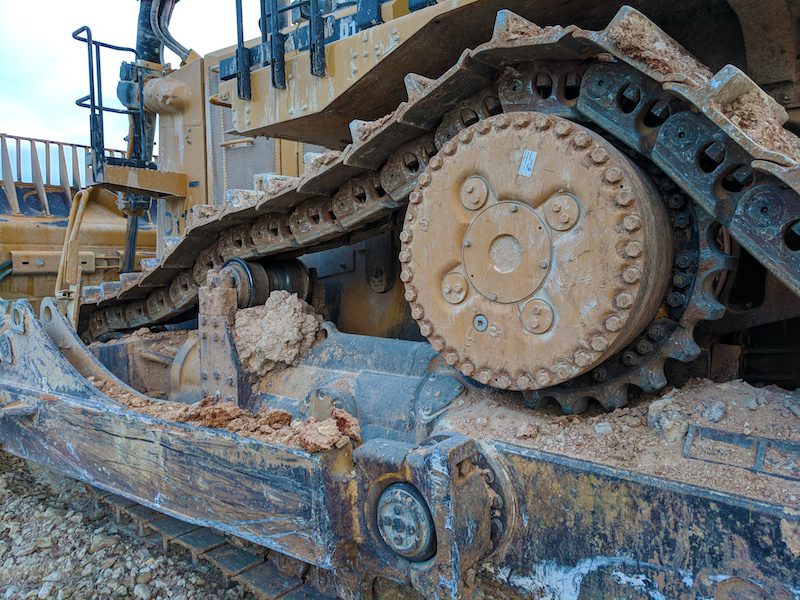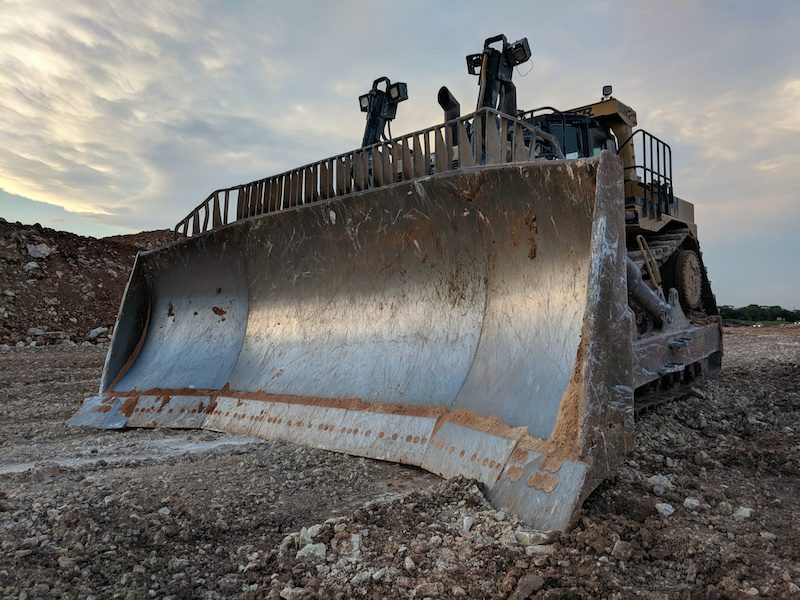Charges laid against BMA and its former Saraji Mine Production Overburden Manager over the death of miner Allan Houston have alleged that the leading miner failed to meet a range of obligations associated with dozer push operations. These included a number of basic risk assessments associated with dozer push operations at the BMA Saraji mine.
Allan Houston, 49, died while working the dozer push in a D11T during the night shift on 31 December 2018. The mine safety regulator alleges that at approximately 10.25 pm on Houston’s dozer began tramming out parallel to the bench edge towards the crib. Houston’s dozer reportedly passed another dozer which was pushing at approximately a 70-degree angle to the low wall bench edge when it changed direction to the left, tramming towards the low wall edge.

The charge sheet obtained by AMSJ reveals that Allan Houston’s dozer reportedly drove over the low wall edge, rolling approximately 18 metres down an embankment coming to rest upside down in a pool of mud and water. Allan died at the scene of the incident from “aspirating mud” the charge sheet reveals.
READ RELATED
- ICAM fails to deliver conclusive findings in Queensland fatality
- What BHP’s Asset President said about mine safety
- Drowning in a dozer
The charges issued against BMA by the Queensland Department of Natural Resources Mines and Energy, have highlighted a lack of a safety and health management system procedure specifically defining dozer push bench preparation. It said that while the safety and health management system included a procedure for working in and around water, “it was not implemented during the dozer push bench preparation on-ramp two at the time of Allan Houston’s death.”
Charges allege that BMA’s safety and health management system included a procedure for risk management which was not implemented during the dozer push bench preparation on-ramp two. “This included the absence of risk assessments completed for the task of dozer push bench preparation.”
The charges have flagged a significant gap in the health and safety management system at the BMA Saraji mine at the time of the incident including that “the presence of water and mud was not identified as a hazard for work being conducted on ramp two” and that “no control measures were implemented to minimise the risks associated with working around water on ramp two” at the mine.”
The Mines Department also alleges that as a result of the absences of a range of safety management system components the dozer operators utilised no additional safety precautions to prevent the dozers from travelling over the bench edge at the mine.
It said “If BMA had ensured the site senior executive for the Mine developed and implemented the safety and health management system for the mine such that it ensured the development of a procedure for dozer push bench preparation, implementation of working in and around water hazard procedure and implementation of the risk management procedure, Mr Houston ‘ s death would have been avoided”
BMA ICAM could not identify conclusions associated with the accident
BMA had previously conducted an ICAM investigation into the death of Allan Houston. The ICAM team identified a range of scenarios associated with the event including that:
- Allan struck his head in the cabin of the dozer and due to partial or total loss of consciousness, he was unable to regain control in time to stop going over the edge, or to operate the dozer down the embankment safely.
- Allan was affected by medications and/or an underlying medical condition, which impaired his ability to operate the dozer and respond appropriately to his environment, or caused him to otherwise operate the dozer in an unsafe manner.
- Allan lost control of the dozer because he was impaired by environmental factors, such as dust, or encountering a large rock. Because he was close to the edge, he was unable to regain control in time to either change course or operate the dozer down the embankment safely.
The ICAM team identified four improvement opportunities for the BMA Saraji site. These centred on reviewing dozer risks, improving the Saraji risk management procedure, enhancing detailed mine scheduling and design, and management of medication among mineworkers.
BMA previously shocked by charges as it extended an ‘olive branch’ to the regulator
Post the tragic loss of Alan Houston, BMA has reportedly made a concerted effort to fix dozer operation risks at its sites. The organisation also extended an ‘olive branch’ to the Queensland Department of Natural Resources & Mines in relation to the death through the sharing of a range of findings on the incident.
The charges reportedly came as a shock to BMA with the Asset President stating that the charges were “deeply disappointing news” in a brief to staff.
BMA’s Asset President, James Palmer previously told workers through an internal memo that “Since the terrible loss of Allan, and throughout our Incident Cause and Analysis Method investigation (ICAM), we have worked in partnership with DNRME, openly sharing our findings and the steps we are taking to ensure it doesn’t happen again”
AMSJ had sought feedback on the incident however a BMA spokesperson told AMSJ “As these matters are before the courts, it is not appropriate for us to comment further.”
The initial hearing of charges will commence at 9.00 am on the 24th March at the Mackay Court House.
Images: Adobe Stock D11T Dozer
Read more Mining Safety News














Years ago I was using ICAM to identify the answer, and yes I working with BHP to identify and create Safety Critical Element and I was using ICAM to be a part of it. I am not sure, I have lots of documents within ICAM, which identify the issue, or at least the answer should have been by 99% as near correct. I have worked with BHP for quite a few years, but safety is not the best attitude and BHP in and around BHP safety fails quite a bit. I was working in OD and I was creating documents for task lists, but the engineer “chopped” it and the engineer reduced it, so safety was absolutely correct, but somebody within BHP agreed with the engineer to reduce the document. Safety in OD was pretty bad. So years ago and I was also working with Saraji, but working in Brisbane, but here in Brisbane “somebody” within the office in Brisbane decided to break the plug assembly and nobody decided to fix it. Again Safety and BHP failed.
I think that BHP bought the dozer, then the Engineer, Leading Hand, HSE manager, Supervisor, Planner, and the owner of the dozer, should have ensured that safety and the employee should have agreed within JSA or THA then signed and then given it to the supervisor to check and agree before operating the dozer.
I hope that when they are talking about BMA, that the responsibility is directly attributable to the CEO and the CFO.